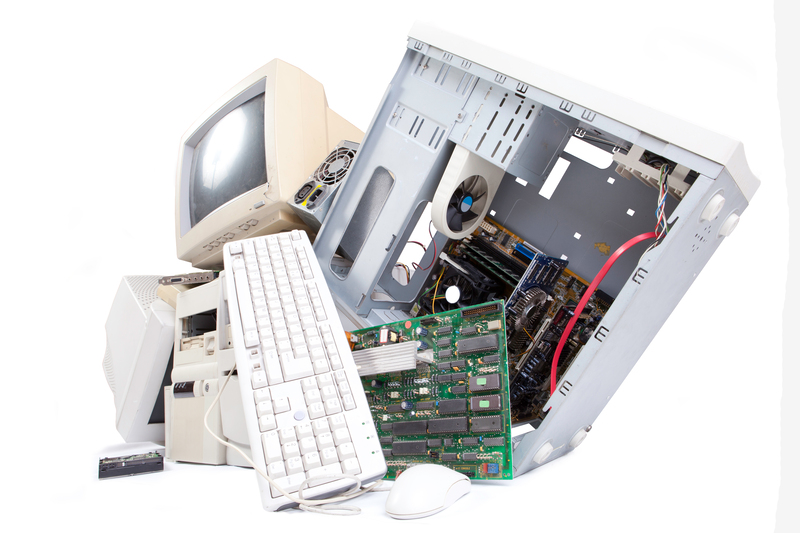Comprehensive Steps to Take When Dealing with Hazardous Waste
Managing hazardous waste is not just a legal obligation but also an essential aspect of safeguarding human health and protecting the environment. Improper handling of hazardous materials can lead to contamination, long-term ecological damage, and severe penalties. Whether you are a business owner, facility manager, or concerned citizen, understanding the key steps to take when dealing with hazardous waste ensures compliance and safety. In this comprehensive guide, we'll cover everything you need to know about safe hazardous waste management, including categorization, handling, storage, transportation, and disposal.
What is Hazardous Waste?
Hazardous waste refers to any discarded material, liquid or solid, that possesses properties harmful to human health or the environment. This may include toxic chemicals, flammable substances, corrosive agents, and reactive materials. Hazardous wastes are often generated in industrial processes, laboratories, healthcare facilities, and even households. According to the Environmental Protection Agency (EPA), hazardous waste is defined by specific characteristics:
- Toxicity: Can cause direct harm to people, animals, or plants.
- Ignitability: Easily catches fire.
- Corrosivity: Can corrode metals or destroy living tissue.
- Reactivity: May explode or release toxic gases when mixed with other substances.

Step 1: Identify and Classify Hazardous Waste
The foundation of effective hazardous waste management begins with identifying and classifying hazardous waste. This requires understanding the nature of your waste, how it is produced, and its potential risks.
- Examine Product Labels and Safety Data Sheets (SDS): Look for warning symbols, hazard statements, and instructions.
- Consult Federal and State Guidelines: The EPA and local agencies, such as state environmental departments, provide lists and definitions of hazardous waste types.
- Conduct Chemical Analysis: When in doubt, laboratory tests can determine characteristics like pH, ignitability, toxicity, etc.
- Use Proper Codes: Assign the correct waste code for tracking and regulatory purposes (for example, the EPA's four-character hazardous waste codes).
Correct identification and classification are crucial to ensure compliance and prevent the mishandling of dangerous materials.
Step 2: Segregate Hazardous Waste from Non-Hazardous Waste
Proper separation minimizes the risk of inadvertent reactions and cross-contamination. Never mix hazardous and non-hazardous waste, as this can create new hazards or complicate disposal processes.
- Use Clearly Labeled Containers: Every storage container should be marked with the correct waste category.
- Physical Barriers: Store incompatible substances apart (for example, acids away from bases).
- Dedicated Collection Points: Establish specific locations for hazardous waste in your facility to keep it separate from general refuse.
*Careful segregation* is essential at every stage, from initial disposal to final removal.
Step 3: Store Hazardous Waste Safely
Safe storage is a non-negotiable element in managing hazardous waste materials. Inadequate storage can lead to leaks, spills, fires, and dangerous exposures.
- Choose Appropriate Containers: Use containers designed for the type of waste. For example, use corrosion-resistant barrels for acids.
- Seal Containers Completely: All lids should fit tightly; do not overfill containers.
- Label Accurately: Labels must include the type of waste, date of accumulation, and appropriate hazard symbols.
- Secondary Containment Systems: Employ spill trays, bunds, or double-walled tanks as required by regulations.
- Temperature Controls: Store temperature-sensitive hazardous materials in climate-controlled environments if specified by their Safety Data Sheets.
*Routine inspections* of storage areas help detect any issues before they escalate, ensuring continued compliance and safety.
Step 4: Handle and Transport Hazardous Waste Properly
The physical act of handling and transporting hazardous waste requires specialized training and strict procedures to mitigate risks.
- Train Personnel Thoroughly: All staff involved must learn proper handling, emergency protocols, and legal requirements. Regular refresher training is recommended.
- Use the Right Equipment: Employ personal protective equipment (PPE) such as gloves, goggles, respirators, and chemical-resistant suits.
- Limit Contact: Never handle hazardous waste with bare hands or without safety measures in place.
- Follow Manifesting Requirements: Most transportation of hazardous waste requires documentation (such as US EPA's Uniform Hazardous Waste Manifest).
- Select Licensed Transporters: Only use certified hazardous waste carriers who comply with local, state, and federal regulations.
*Efficient transport planning* reduces the risk of spills, exposure, and inadvertent releases during transfer to treatment or disposal facilities.
Step 5: Dispose of Hazardous Waste According to Regulations
Disposal is the final-- and perhaps most critical--step in the hazardous waste lifecycle. Local, state, and federal laws strictly govern the disposal of hazardous materials to prevent environmental harm.
- Use Permitted Disposal Facilities: Work with treatment, storage, and disposal facilities (TSDFs) permitted by the EPA or relevant agencies.
- Document Each Step: Maintain thorough records, including waste manifests, receipts, certificates of destruction, and any regulatory correspondence.
- Follow Waste-Specific Protocols: Certain wastes, such as medical or radioactive materials, have unique disposal requirements.
- Comply with Global Regulations: If transporting hazardous waste internationally, adhere to the Basel Convention and any country-specific rules.
*Legal compliance* not only protects the environment but also shields your organization from liability and penalty.
Step 6: Respond Quickly to Spills or Accidents
Despite best efforts, accidents sometimes happen. Knowing how to respond to hazardous waste spills can prevent escalation and mitigate harm.
- Develop an Emergency Action Plan: Outline clear procedures for spill containment, cleanup, reporting, and medical response.
- Train Employees: Everyone handling hazardous waste should understand the protocol for spill response, including evacuation routes and communication lines.
- Use Spill Kits: Keep chemical-specific spill kits accessible in storage and handling areas.
- Report Incidents: Follow regulatory requirements for reporting releases or accidents to the proper authorities.
- Review and Improve: After any incident, assess the response and update your procedures as needed.
*Prompt action* limits both environmental damage and health risks.
Step 7: Maintain Complete Records and Documentation
Meticulous recordkeeping of hazardous waste activities isn't just a recommendation--it's mandatory. These documents demonstrate your compliance and help in audits or legal inquiries.
- Waste Manifests: Track each shipment of hazardous waste from cradle to grave.
- Training Records: Keep certificates, attendance logs, and course materials for employee training.
- Inspection Logs: Regularly record details of storage area inspections and any corrective actions.
- Incident Reports: Document details of any spills, exposures, or unusual events.
- Permits and Registrations: Maintain all regulatory permits and communications with environmental agencies.
By staying organized, you make compliance audits smoother and reduce the risk of costly mistakes or fines.
Step 8: Regularly Audit and Review Hazardous Waste Procedures
Continuous improvement is vital to upholding safe hazardous waste handling practices. Routine audits discover weaknesses and help you adapt to new regulations, technologies, and industry standards.
- Conduct Scheduled Inspections: Regularly inspect your facility, storage, and procedures for compliance.
- Update Policies: Amend procedures in response to audit findings, regulatory changes, or new best practices.
- Employee Feedback: Gather suggestions or concerns from staff to identify practical issues and improvement areas.
- Stay Informed: Subscribe to regulatory updates and attend relevant training seminars or workshops.
*Regular reviews* help maintain a strong culture of safety and responsibility.
Top-Tier Tips for Managing Different Types of Hazardous Waste
Different forms of hazardous waste require distinct approaches. Here are some expert tips for handling common types:
- Liquid Chemicals: Use spill-proof, chemical-resistant containers and secondary containment at all times.
- Batteries: Store used batteries in acid-resistant containers, separate from other wastes, and recycle through certified programs.
- Medical Waste: Employ puncture-proof sharps containers and follow strict biohazard labeling and disposal protocols.
- Electronic Waste (E-waste): Remove and separately store fluorescent bulbs, circuit boards, and mercury switches; partner with certified e-waste recyclers.
- Pesticides: Keep original containers, store in a cool, dry, well-ventilated place, and follow label instructions for disposal.
Legal and Environmental Responsibility in Hazardous Waste Management
Proper hazardous waste disposal isn't just about obeying laws; it's about protecting our planet and the communities within it. Failure to follow the right steps can lead to toxic leaks, lasting soil and water contamination, and a negative public image.
- Environmental Impact: Proper practices prevent pollution, protect wildlife, and sustain natural resources.
- Community Health: Reduces the risk of exposure for workers and the public, especially children and vulnerable groups.
- Reputational Protection: Demonstrating strong hazardous waste procedures shows responsibility to regulators, customers, and the community.

Frequently Asked Questions About Steps to Take When Handling Hazardous Waste
How do I know if a waste is classified as hazardous?
Look for symbols or hazard statements on packaging, check the Safety Data Sheets, or review regulatory lists published by the EPA or your local environmental agency. When in doubt, seek professional assistance for chemical analysis.
Can I dispose of hazardous waste in the regular trash?
Never dispose of hazardous waste in household or business trash. Doing so may result in environmental contamination and heavy fines.
What should I do if I have a hazardous waste spill?
Contamination should be contained immediately using the appropriate spill kit, reported as required by law, and cleaned up by trained personnel using appropriate PPE.
Are there special requirements for transporting hazardous waste?
Yes. Only licensed transporters should move hazardous waste; detailed documentation (manifests) and compliance with DOT and EPA regulations are mandatory.
Conclusion: Protecting the Future with Proper Hazardous Waste Management
Managing hazardous waste is a complex yet essential responsibility for businesses and individuals alike. By following these crucial steps to take when dealing with hazardous waste-- from identification and segregation to safe disposal and emergency response-- you play a pivotal role in safety, legal compliance, and environmental stewardship.
Staying informed, training your team, and partnering with certified professionals can ensure your hazardous waste handling policies meet today's highest standards. For further information or to schedule a hazardous waste audit, consult your local environmental agency or reputable waste management experts.
Remember: Responsible hazardous waste management protects lives, preserves our environment, and ensures compliance with ever-evolving regulations. The steps you take today make all the difference for tomorrow.